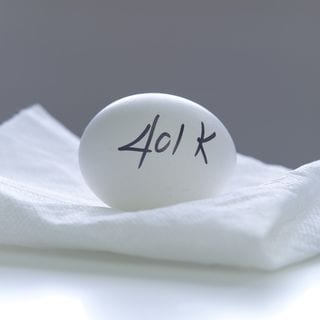 Designed for employees of state and local governments, plus a few tax-exempt organizations, the 457(b) retirement plan is a way to save for retirement, with tax benefits similar to a 401(k).
Designed for employees of state and local governments, plus a few tax-exempt organizations, the 457(b) retirement plan is a way to save for retirement, with tax benefits similar to a 401(k).
The tax-free growth of savings is perhaps the best known advantage of the 457(b) retirement plan, says Bankrate’s recent article, “Pros and cons of government 457(b) retirement plans.” Federal government employees have access to a thrift savings plan, and not a 457(b) plan.
A 457(b) is similar to a 401(k), in that it lets employees deposit money in a special retirement account that provides tax advantages, letting savings grow tax-free over time. You can only defer a certain dollar amount each year, and the amount you can defer is linked to the cost-of-living (indexes), like the 401(k). Similar to the 401(k) program, which has both a pre-tax and an after-tax Roth version, 457(b) plans may also offer these two versions of the retirement plan.
The major difference between the two is that the pre-tax plan lets you contribute money and take a tax deduction today, and then at retirement you’ll pay taxes when you take money out of the account. However, the Roth version of the 457(b) lets you put in money after-tax–paying taxes on the contributions today–but you won’t have to pay tax on any withdrawals at retirement.
A key difference in 457(b) plans is that 457(b) plans also may allow employees to save extra money, beginning three years before the “normal retirement age” (which is specified in the plan). In each of those three years, employees can contribute twice the normal elective deferral limit or the sum of the current year’s ceiling, plus unused portions from prior years, whichever is less.
When it comes to withdrawing funds early, 457(b) plans make it difficult to withdraw money in an emergency. A 457(b) plan can only make hardship distributions, if the participant has no other resources available. Then, if you take a distribution from the 457(b), you’d be required to stop making deferrals for a certain period of time.
You can’t take out money from 457(b) plan for foreseeable withdrawals like buying a house or paying tuition for a dependent. You can do so from a 401(k) plan, although most experts will tell you it’s not a great idea. The only way you can take a withdrawal from a 457(b), is if it is an extreme and provable emergency.
What’s nice is that you can have an IRA, even when you have a 401(k) or a 457(b). These accounts are very tax-friendly for saving for retirement.
Reference: Bankrate (July 19, 2019) “Pros and cons of government 457(b) retirement plans”
